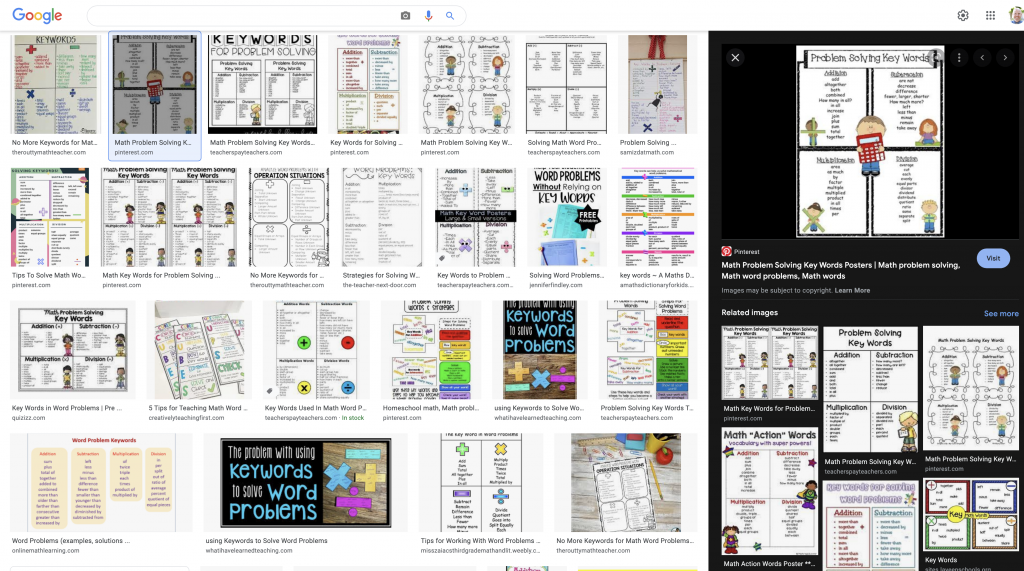For many educators, word problems surface longstanding fears of mathematics and memories of traumatic childhood experiences in math class. As a result, we often see posters on classroom walls attempting to distill strategies for solving word problems into a collection of key words.
Perhaps you have seen the thousands of key word posters on the internet…

These posters claim that there exists a collection of words that mean addition, or subtraction, or multiplication, or division. Ostensibly, students are supposed to read the word problem, identify the key words in the problem, and then perform the operations as indicated by those keywords.
This approach simply does not work!
In their Elementary School Journal article, Sarah Powell and Xin Lin (University of Texas/Austin) and Jessica Namkung (University of Nebraska/Lincoln) studied the effectiveness of the key word strategy. Powell, Lin, and Namkung looked at hundreds of released standardized test items for grades 3-8, identified the likely keywords, and determined whether those words matched the correct solution strategy for each problem.
Over all, what did the study find?
With single-step word problems, the keyword led to a correct solution less than 50% of the time; for multi-step word problems, it did so less than 10% of the time.
Clearly, the keyword strategy is not the best approach. What’s more, teaching it fails to develop the authentic mathematical reasoning skills that students need for more-difficult problems down the road. “To develop reasoning about word problems,” they argue, “educators must challenge themselves to not rely on the superficial word-problem strategy of using keywords.”
How should we teach students to solve word problems?
- Teach students how to use the Three Read protocol on their own. There are various flavors of this protocol, but we prefer the one used by San Francisco Unified School District.
- Teach students how to use visual representation to digest and organize the relevant information. Tape diagrams is our preferred visual representation for word problems.
- Teach students the importance of checking their answer. This might mean you will assign fewer problems to account for the fact that students will solve the problem and then verify their answer satisfies for context of the problem.
.
.
.
